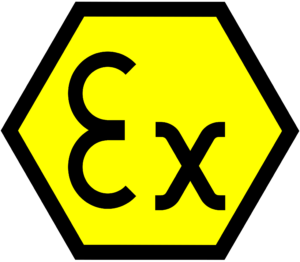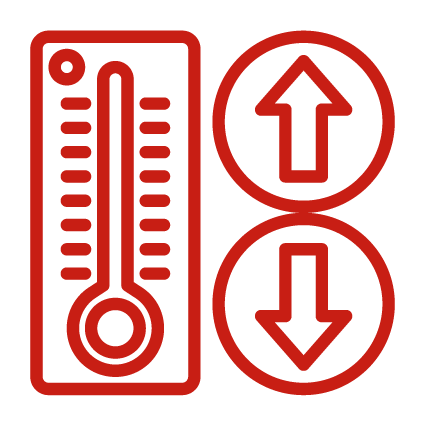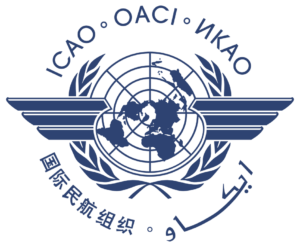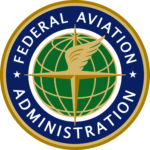Lighting Engineering Solutions for the Oil & Gas sector
The installations for extracting and transforming oil or natural gas are widespread throughout the world; they are found in both land and marine environments and often even in areas prone to extreme weather conditions. They are characterised by a high risk of explosion and this means that they are subject to numerous safety regulations.
Therefore, the lighting is of the utmost importance.
To ensure maximum air traffic safety, structures such as flare stacks, chimneys, cranes and offshore platforms must be clearly visible in all weather conditions.
«When clients bring us a challenge, our engineers design the best engineering solution and succeed in satisfying them as the result of a process that has been tried and tested with thousands of applications installed worldwide.»
Finding solutions and providing excellence
We are a team of engineers that is highly specialised in designing aircraft warning light solutions. Write a message and get in touch with us.
Regulations and certifications for obstruction lighting systems in the Oil & Gas sector
There is no single regulation that defines the minimum mandatory requirements for obstruction lighting systems. Actually, in order to meet all the safety standards, it is necessary to refer to numerous regulations, ranging from those that certify Ex equipment intended for use in explosive atmospheres (IECEx, ATEX for Europe, EAC for Russia and Eurasia) to those that regulate air traffic safety (ICAO, FAA, CAA, ENAC or other national regulations).
As far as air traffic safety is concerned, the reference guidelines are the international ones developed by the ICAO; however, many countries have opted to draw up their own domestic regulation (the most important of which is the one developed by the FAA for the USA). Therefore, the applicable regulations and certifications are dependent on the location of the structures: flare stacks, chimneys, cranes, offshore platforms.
«We help our clients develop their applications all over the world, by supporting them with our expertise. During our 30+ years in business, we have designed systems for all types of regulations, such as those of the ICAO, FAA, IECEx, ATEX and EAC.»
 |
ATEX EU directives describing allowed equipments in environments with explosive atmosphere |
 |
IECEx Standards relating to equipment for use in explosive atmospheres |
| EAC Eurasian Conformity CU TR 012/2011 on the safety of equipment in explosion hazardous environments |
Don’t know where to start?
As a result of having installed thousands of systems all over the world, we are able to produce a definitive summary concerning the best practices for aircraft warning systems.
Obstruction lighting system configurations for Oil & Gas structures
Annex 14, Volume I (Aerodrome Design and Operations) of the “Convention on International Civil Aviation”, drawn up by the ICAO (International Civil Aviation Organisation), contains the rules that define “what” and “how” to provide markings in order to ensure the safety and regularity of air navigation.
The structures to be marked are defined as “aircraft obstacles” and are usually large vertical constructions, such as flare stacks, chimneys, cranes and offshore platforms.
Visual marking consists of aircraft warning paint and/or obstruction lights. There is no single layout: the number and type of lights to use is variable and depends on the type of structure, the context in which it is installed and the client’s objectives.
«It is the designer’s responsibility to analyse the project specifications and find the best solution in terms of functionality, cost and regulatory compliance.»
Fundamental rules:
- Structures with a height of 45 m or less must be marked during the night with LIOL-B lights (Low Intensity Obstruction Lights, Type-B) installed at the top.
- Structures that are over 45 m tall will have different levels of lighting, depending on their height.
- The arrangement and number of lights to be placed on each level depends on the shape of the structure. The arrangement must be such as to allow the light to be seen from every angle in azimuth.
- If the structures to be marked are very big or numerous (e.g. groups of buildings), the final objective of the marking system is to convey the overall outline.
Flare stacks are combustion chimneys used in industrial plants, oil refineries, petrochemical plants and gas power stations to purify the air flows that have higher concentrations of organic vapours than the lowest explosive limit. These structures are generally more than 45 metres tall and must be made clearly visible both day and night.
How many lights per level?
Diameter < 6m3 obstruction lights must be used (120°) for flare stack with a circular base of less than 6 metres. |
|
Diameter > 6m4 obstruction lights must be used (90°) for flare stacks with a circular base of more than 6 metres. |
|
Width < 45m4 warning lights must be used (one at each angle) for flare stacks with a square base. |
How many lights per level?
Diameter < 6m
3 warning lights must be used (120°) for chimneys with a circular base of less than 6 metres.
Diameter > 6m
4 warning lights must be used (90°) for chimneys with a circular base of more than 6 metres.
Width > 45m
4 warning lights must be used (one at each angle) for flare stacks with a square base.
Chimneys are used in oil refineries, petrochemical plants and gas power stations to extract the fumes, gases and vapours that must be dispersed at a certain height from the ground. These structures are generally more than 45 metres tall and therefore, must be clearly visible both day and night.
How many lights per level?
Diameter < 6m3 warning lights must be used (120°) for chimneys with a circular base of less than 6 metres. |
|
Diameter > 6m4 warning lights must be used (90°) for chimneys with a circular base of more than 6 metres. |
How many lights per level?
Diameter < 6m
3 warning lights must be used (120°) for chimneys with a circular base of less than 6 metres.
Diameter > 6m
4 warning lights must be used (90°) for chimneys with a circular base of more than 6 metres.
An enormous variety of cranes are used for the various Oil & Gas segments: floating cranes, mobile cranes, special cranes for offshore applications, harbour cranes and shipyard cranes. These structures can exceed 45 metres in height and must be made clearly visible both day and night.
How many lights per level?
Top levelFrom 1 to 3 obstruction lights: at the top and, if neccessary, at jib and counter-jib. |
|
Other levels1 or 2 lights must be used on the other levels to mark the structure from every angle. |
How many lights per level?

Top level
From 1 to 3 obstruction lights shall be used on the top level: at the top and, if neccessary, at jib and counter-jib.
Other levels
1 or 2 lights must be used on the other levels to mark the structure from every angle.
Oil platforms, whether these are fixed platforms, mobile drilling rigs, FPSOs or other types of vessels, are particularly challenging for marking as these areas are classified as “at risk of explosion”. These structures can exceed 45 metres in height and therefore, must be made clearly visible both day and night.
Flare stacks are combustion chimneys used in industrial plants, oil refineries, petrochemical plants and gas power stations to purify the air flows that have higher concentrations of organic vapours than the lowest explosive limit. These structures are generally more than 45 metres tall and must be made clearly visible both day and night.
How many lights per level?
Diameter < 6m3 obstruction lights must be used (120°) for flare stack with a circular base of less than 6 metres. |
|
Diameter > 6m4 obstruction lights must be used (90°) for flare stacks with a circular base of more than 6 metres. |
|
Width < 45m4 warning lights must be used (one at each angle) for flare stacks with a square base. |
How many lights per level?
Diameter < 6m
3 warning lights must be used (120°) for chimneys with a circular base of less than 6 metres.
Diameter > 6m
4 warning lights must be used (90°) for chimneys with a circular base of more than 6 metres.
Width > 45m
4 warning lights must be used (one at each angle) for flare stacks with a square base.
Chimneys are used in oil refineries, petrochemical plants and gas power stations to extract the fumes, gases and vapours that must be dispersed at a certain height from the ground. These structures are generally more than 45 metres tall and therefore, must be clearly visible both day and night.
How many lights per level?
Diameter < 6m3 warning lights must be used (120°) for chimneys with a circular base of less than 6 metres. |
|
Diameter > 6m4 warning lights must be used (90°) for chimneys with a circular base of more than 6 metres. |
How many lights per level?
Diameter < 6m
3 warning lights must be used (120°) for chimneys with a circular base of less than 6 metres.
Diameter > 6m
4 warning lights must be used (90°) for chimneys with a circular base of more than 6 metres.
An enormous variety of cranes are used for the various Oil & Gas segments: floating cranes, mobile cranes, special cranes for offshore applications, harbour cranes and shipyard cranes. These structures can exceed 45 metres in height and must be made clearly visible both day and night.
How many lights per level?
Top levelFrom 1 to 3 obstruction lights: at the top and, if neccessary, at jib and counter-jib. |
|
Other levels1 or 2 lights must be used on the other levels to mark the structure from every angle. |
How many lights per level?

Top level
From 1 to 3 obstruction lights shall be used on the top level: at the top and, if neccessary, at jib and counter-jib.
Other levels
1 or 2 lights must be used on the other levels to mark the structure from every angle.
Oil platforms, whether these are fixed platforms, mobile drilling rigs, FPSOs or other types of vessels, are particularly challenging for marking as these areas are classified as “at risk of explosion”. These structures can exceed 45 metres in height and therefore, must be made clearly visible both day and night.







